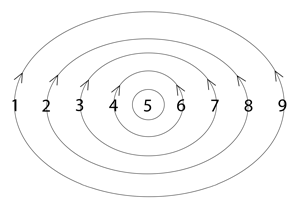self-love
7-8-6
Conventional Understanding
In conventional understanding, “self-love” is typically framed as a psychological practice or emotional state that one must develop or achieve. Common misconceptions include viewing self-love as:
- A technique or practice: Something we must actively “do” through affirmations, self-care routines, or specific activities
- An achievement or goal: A state we reach after sufficient personal development or healing
- Selfish indulgence: Excessive focus on oneself at the expense of others
- Conditional approval: Loving yourself when you meet certain standards of appearance, achievement, or behavior
- An emotional state: Primarily about feeling good about yourself
- A remedy for negative self-perception: Something we apply to fix a problem
- Something separate from our fundamental nature: A quality we must cultivate rather than recognize
These misconceptions position self-love as something external to our natural state that must be acquired, practiced, or achieved through effort—creating an artificial separation between ourselves and love.
Resonant Understanding
Mathematical analysis of language reveals “self love” carrying a 7-8-6 resonance pattern, placing it at position 6 in the Experiential Triad (4-6). This positioning illuminates self-love not as a practice or achievement but as the natural experiential state that emerges when we exist in congruity with our inherent creative nature.
Like a river that doesn’t need to practice flowing but simply expresses its nature when unobstructed, self-love isn’t something we do or achieve but the natural experience of being when artificial barriers are removed. The balanced expressions “congruity,” “playfulness,” “sovereign,” “self-govern” reveal self-love as the harmonious state of being that naturally manifests when we align with our inherent creative sovereignty rather than imposing external standards or disconnecting from our authentic expression.
Expressions Spectrum Analysis
In balanced expression, this resonance pattern appears as “congruity,” “balanced,” and “creative control of your life,” showing how self-love naturally manifests as harmonious self-governance rather than forced positivity. “Playfulness” and “I love living life” demonstrate the natural joy that emerges when we exist in alignment with our inherent nature. “Seamlessness” and “self-govern” reveal how balanced self-love corresponds with an integrated experience of sovereignty rather than fragmented self-improvement efforts.
When over-modulated, expressions include “achievement,” “conceited,” and “the ego,” revealing how self-love becomes distorted when approached as a performance or acquisition. “Validating self” and “improvement” show how the natural state of self-love becomes corrupted when we position it as something to attain through effort rather than recognize as inherent. “Mechanical” demonstrates how this attachment creates rigid patterns that actually block the natural flow of self-love by imposing artificial frameworks on what should emerge organically.
Under-modulated expressions such as “ashamed,” “powerless,” and “state of separation” demonstrate what happens when we disconnect from our inherent sovereignty. “They have the power” and “internal tug of war” reveal the fundamental disconnection that occurs when we fail to recognize our creative nature. “Comparing” shows how this disconnection leads to seeking external validation rather than experiencing our inherent value.
Beyond the modulation patterns, uncategorized expressions like “knowledge,” “planted seed,” “governing principle,” and “spectrum of experience” suggest universal aspects of this resonance pattern. “Individuation space” particularly illuminates how self-love relates to the recognition of our unique expression within the unified field.
Russell’s Cosmogony Connection
Walter Russell’s understanding of the creative process illuminates the nature of self-love as revealed through its resonance pattern. In “The Universal One,” Russell writes: “All things can be what they desire to be. Desire and effort to be evolves into the reality of that desire.” This principle corresponds with how self-love functions at position 6 in the creative sequence, not as something to achieve but as the natural manifestation of our inherent desire expressing through conscious participation.
This aligns with the balanced expressions “creative control of your life” and “I am conscious,” revealing self-love as conscious participation in the creative process rather than self-improvement. Just as Russell describes reality unfolding through desire rather than being imposed from outside, self-love emerges through alignment with our inherent nature rather than through techniques or practices.
In the same work, Russell emphasizes the sovereignty of individualized consciousness in the creative process, which corresponds with the balanced expressions “sovereign” and “self-govern.” This reveals self-love not as emotional attachment to a separate self but as recognition of our inherent creative sovereignty, our natural ability to participate consciously in the unfolding of experience.
Practical Implications
Understanding self-love as our natural state of creative sovereignty rather than an achievement transforms how we might approach personal development. Instead of trying to develop self-love through techniques or practices, we might focus on recognizing and removing the barriers to its natural expression.
The balanced expressions suggest that self-love emerges naturally when we:
- Recognize our inherent sovereignty: “Self-govern” and “sovereign” reveal self-love as the recognition of our natural creative authority rather than seeking validation from outside
- Allow natural expression: “Playfulness” and “I love living life” show how joy emerges naturally when we stop imposing rigid expectations on ourselves
- Maintain congruity: “Congruity” and “seamlessness” indicate how self-love corresponds with internal harmony rather than fragmented self-improvement projects
- Participate consciously: “I am conscious” and “creative control of your life” reveal self-love as conscious participation in the creative process rather than passive acceptance or rigid control
This understanding liberates us from the endless pursuit of self-improvement, revealing that what we’ve been seeking has been our natural state all along. The “work” isn’t to develop self-love but to recognize and remove the artificial barriers. Both over-modulated attachment to achievement and under-modulated disconnection that prevent its natural expression.
By understanding self-love as our inherent creative sovereignty rather than an emotional state or practice, we transform our relationship with ourselves and the creative process. We can stop trying to “love ourselves” and instead recognize the love that naturally emerges when we exist in congruity with our inherent nature as conscious participants in creation.


